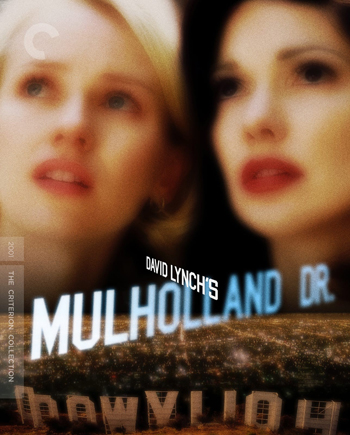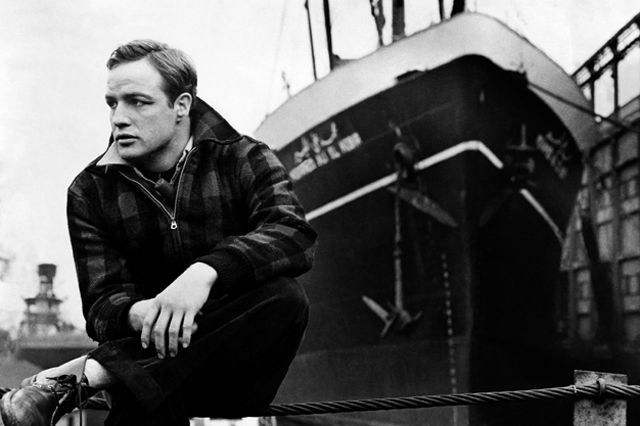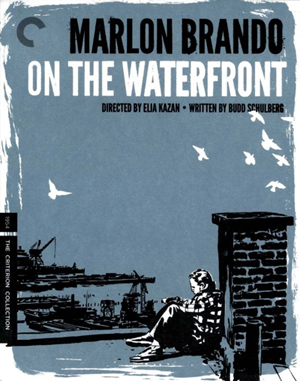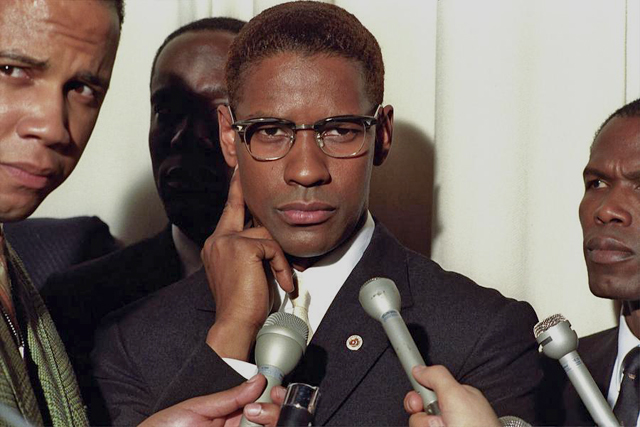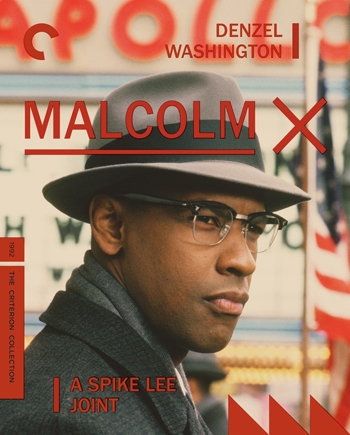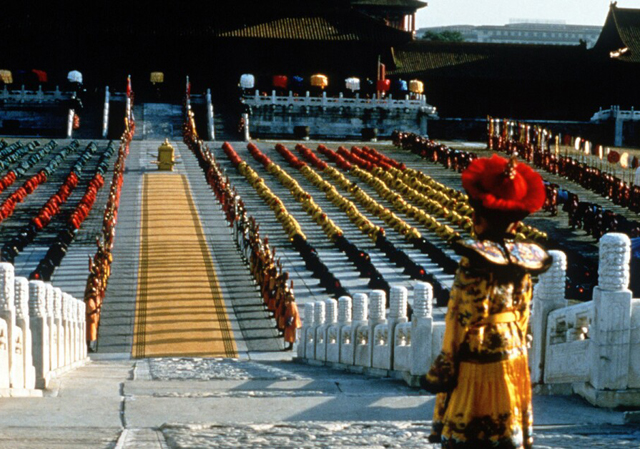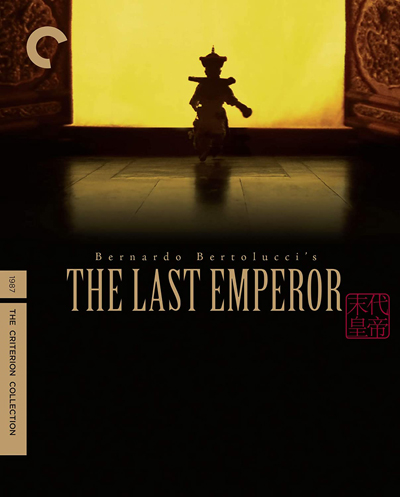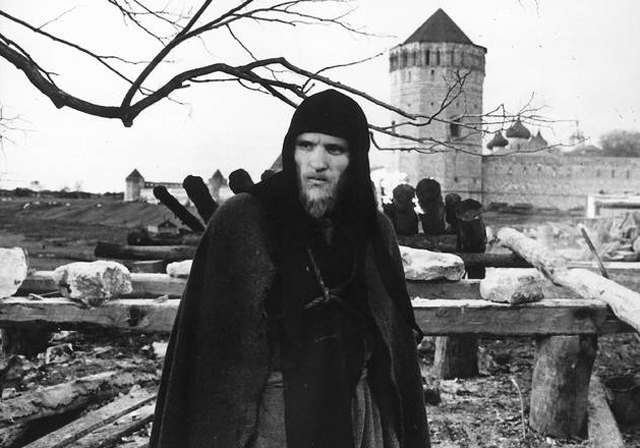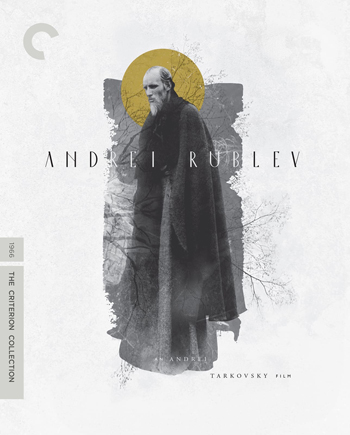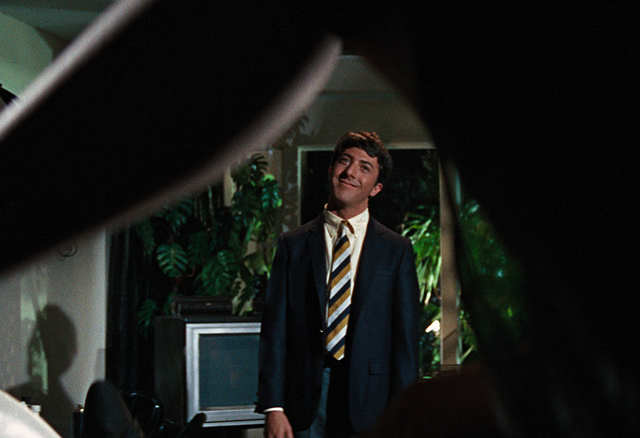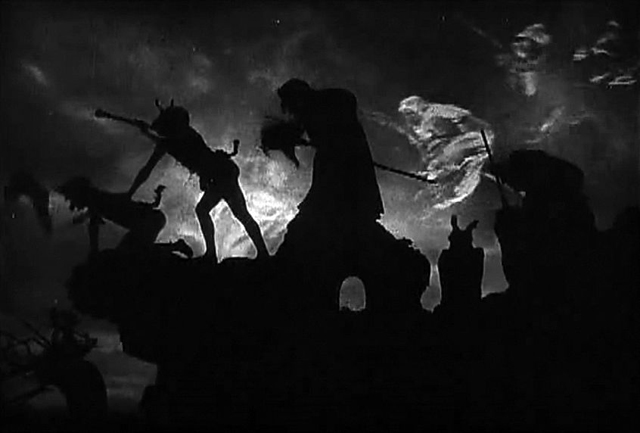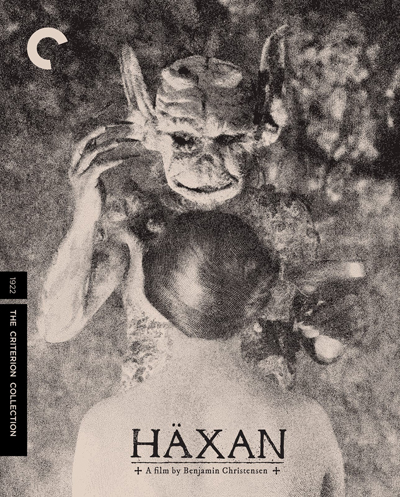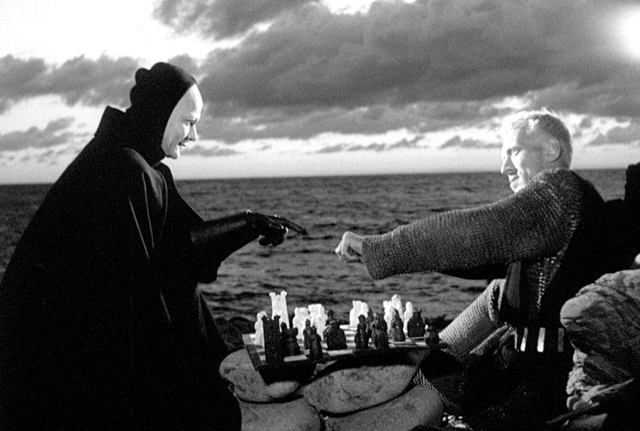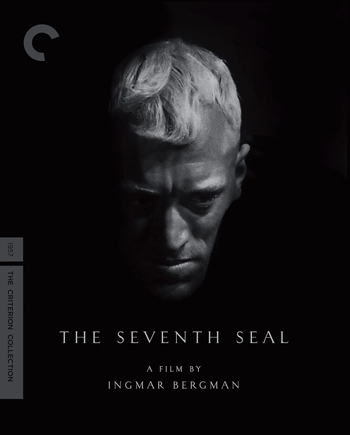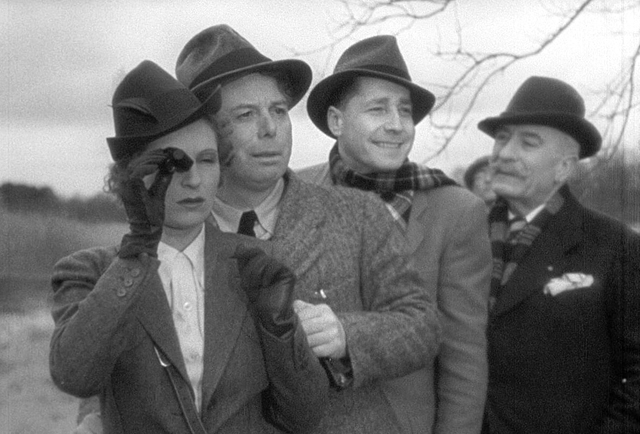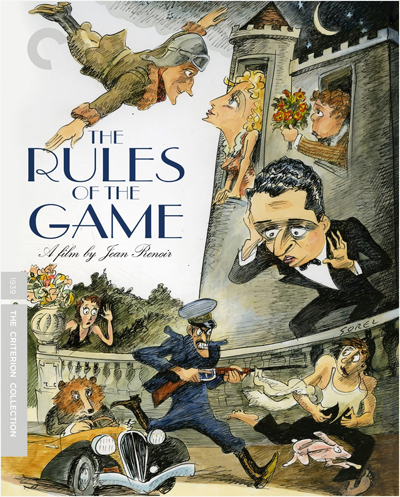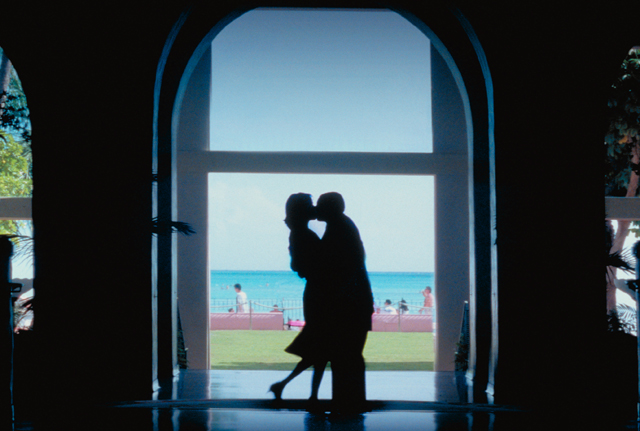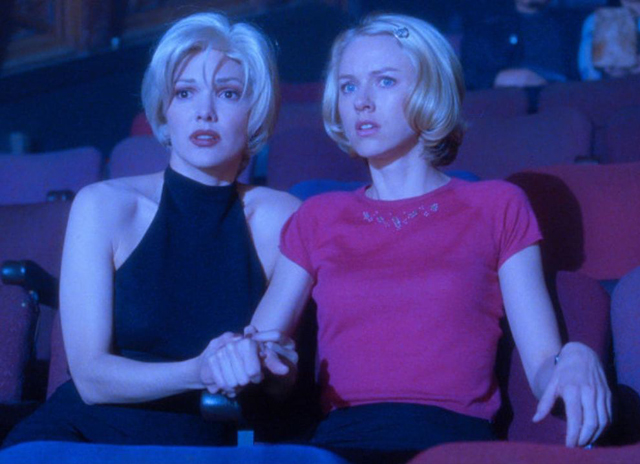
There are some filmmakers out there who are best described as acquired tastes. These are the auteurs; movie directors who unique style is uncompromised in the final product of their films, which may be off-putting to some people who find that style a little dense and impenetrable. But, these types of filmmakers are also the kind that develop a dedicated following from audiences who are drawn to that kind of bold, un-compromised type of filmmaking. The Criterion Collection understands the appeal of unique voices in cinema, and they have served these kinds of niche fanbases with excellent home video collections from a select number of auteur filmmakers. These include movies from Canadian director David Cronenberg, whose body horror features certainly are meant for a certain discernable audience. There’s also Terrence Malick, whose visual poem style features can sometimes test casual audiences who are looking for more linear storytelling. And then there is the most notoriously cerebral filmmaker to have made it through the Hollywood machine; David Lynch. Lynch’s style is very much an acquired taste for many, given his often dark and disturbing directorial vision, but that has been the thing that has turned him into an icon for many die hard cinephiles. There really is no one else that makes movies the way that David Lynch does; often visually daring and just plain weird from concept to the final shot. Many say that no one captures the feeling of a dreamlike state, often a nightmarish one, on film better than he does. Criterion has included seven of Lynch’s most noteworthy films in their collection, including his daring debut Eraserhead (1977, Spine #725), two of his most famous deconstructions of Americana with Blue Velvet (1986, #977) and Lost Highway (1997, #1152), as well as what many see as his most personal film, which is a deconstruction of the myths of Hollywood itself in Mulholland Drive (2001, #779).
The making of Mulholland Drive has a unique story on it’s own. In addition to making his name well known as a filmmaker, Lynch also managed to break through on the small screen as well. In 1990, he produced the mystery thriller series Twin Peaks for ABC Television, which became a massive hit for the network. Lynch’s dark and bizarre trademarks were very much present in the show, and it made the show stand out as very much a departure from the standard network television fare at the time. However, meddling from the network with regards to the direction of the story and also with it’s time slot placement caused the show to lose much of it’s audience in it’s second season, and ABC pulled the plug soon thereafter. Still, the 48 episodes that it managed to air on TV left an indelible impact, and it is the thing that cemented David Lynch as a household name. Lynch tried to put Twin Peaks to rest with a prequel movie that is also included in the Criterion Collection, Twin Peaks: Fire Walk with Me (1992, #898), and twenty years later he would even get to make a third season revival on the cable channel Showtime. But after the disappointing short run of Twin Peaks, Lynch wanted to try his hand again at creating another television series. Initially, he imagined a spin-off of Twin Peaks, centered around the character of Audrey Horne. But, over time he devised a new idea that centered around the dark side of the film industry. This concept would become the basis for a 90 minute pilot titled Mulholland Drive. The show would center around several characters living on the periphery of the entertainment industry, with the main character named Betty Elms played by a then unknown Naomi Watts. Unfortunately, the pilot was never picked up and Lynch was left with another incomplete vision that this time audiences would sadly never see. That was until he received financial assistance from French based production company Studio Canal to shot more scenes and turn the open-ended pilot into a fully realized feature film. The resulting completed film is pure Lynchian madness, as it deviates from the straight-forward mystery of it’s original vision and becomes on of the director’s most cerebral head trips in it’s new form.
The film introduces us to the titular road that crisscrosses the peaks of the Hollywood Hills in the dead calm of night. A woman emerges as the only survivor of a deadly car wreck, and she seeks shelter in a nearby apartment complex. The following morning, an aspiring actress named Betty Elms (Watts) arrives in Hollywood with dreams of stardom. She takes up residence in an apartment loaned to her by her aunt. When Betty enters the apartment, she is shocked to find another woman there already; the same woman from the crash. Suffering from amnesia, the woman goes by the name Rita (Laura Harring). Betty tries to help Rita remember who she is, and to also find out why she has so much cash in her purse as well as a mysterious blue key. While having dinner that night, Rita suddenly remembers a name; Diane Selwyn. They track down an apartment address listed to Ms. Selwyn and shockingly find a rotting corpse inside. Meanwhile, a film director named Adam Kesher (Justin Theroux) is struggling to cast a lead role in his film, and is being pressured by the mafia connected Castigliane brothers (Dan Hedaya and Angelo Badalamenti) to chose a girl named Camilla Rhodes for the part over everyone else, including Betty. After the trauma of finding the corpse, Betty and Rita return to their apartment. The grow more intimate and end up making love. In the middle of the night they are awoken and drawn to mysterious theater down the road called Club Silencio. The performance they watch puts both girls into an intense hallucinatory state. Afterwards, we meet the woman Diane Selwyn, who looks just like Betty, who is a struggling actress having a secret affair with a movie star named Camilla Rhodes, who looks like Rita. We watch their relationship crumble and Diane takes increasingly more dark turns in her life before things ultimately fall apart for her, becoming yet another casualty of the broken dreams of Hollywood.
It’s clear when watching the movie where Lynch shifted gears and turned his pilot episode into a fully realized feature film. The first half of the movie plays out in a Twin Peaks sort of mystery soap opera. But once the Club Silencio scene begins, the movie pivots and becomes something entirely different. Lynch dispenses with the story that he had been telling for the last hour and he even makes you question whether any of it was real by the questions posed in the final half of the film. The theory posed by the second part of the film is that the story we were being told was an imagined dream of the doomed Diane Selwyn, creating a different reality where her life isn’t in shambles and where she is the heroine of her own story. That’s why Betty comes across as the more traditional heroine, because it’s the kind of cinematic role model that Diane always wished she had been. Rita, on the other hand, is an imagined version of Diane’s lover Camilla, one in which she is more easily controlled by the possessive Diane. It’s interesting that Lynch takes this dramatic turn with his film, especially with the knowledge knowing that it was being developed as a TV series. Instead of completing the story that he envisioned when he originally developed the pilot, Lynch stops the narrative dead in it’s tracks and deconstructs it completely. The movie as a result becomes far more of a commentary on the nature of the cutthroat movie business. By showing us the contrast between Diane’s lonely, bitter existence and the imagined heightened reality of the soap opera that Betty lives within, we see how so much of the entertainment business is built upon the tragic rejection of so many people who get used and abused all in the pursuit of the fleeting promise of stardom.
It’s the main reason why David Lynch chose for his title Mulholland Drive. The street is a winding road that sits atop the Hollywood Hills and marks a bit of a boundary between the rich and glamourous opulence of Hollywood itself and the drab and lower rent San Fernando Valley. In a way, Mulholland Drive becomes a bit of a metaphorical dividing line between the have and have nots, which becomes central to the theme of the movie. Mulholland Drive often gets compared with another classic movie named after another famous thoroughfare in Tinseltown; Sunset Boulevard (1950). Billy Wilder’s acclaimed satire about the broken dreams of the film industry certainly had a big influence on what David Lynch intended for his look at Hollywood, but where the two diverge is in how the depths of humanity are focused on in the story. In Sunset Boulevard, we witness the madness of Norma Desmond through the eyes of another, but in Lynch’s Mulholland Drive, we are brought into the madness itself. In typical Lynchian fashion, the lines between what’s real and what isn’t is blurred and through that contrast, Lynch is able to deliver his portrayal about the dark side of show business. There’s also another interesting wrinkle added to this move when you learn about Naomi Watt’s own history with the movie industry. She has said in interviews that her own experience trying to make it in Hollywood was very much reflected in the characters of Betty and Diane. She struggled for years trying to break into acting, and even fell into deep depressions during that time. Right before David Lynch cast her, Naomi was facing eviction from her apartment and had lost her health insurance. She nearly quit acting before her friend and fellow Aussie Nicole Kidman talked her into staying, and sure enough Mulholland Drive would indeed be her big break. She knew all too well the kind of part she would be playing and that personal experience really carries through in the film. The role may have hit close to home, but Naomi Watt’s authenticity in the role really helps to elevate the film beyond just it’s eccentricities.
The Criterion Collection edition of Mulholland Drive is an interesting exercise in preservation. David Lynch shot the movie like most of his films on celluloid. However, the parts of the film that were supposed to be part of the TV pilot are shot on a different kind of stock than the parts that were filmed a year later to make the movie. Most people won’t know the difference, but when it comes to restoration, the difference in film quality can be substantial. Luckily for Criterion, Lynch and his director of photography Peter Deming were deeply involved in the production of this new 4K digital master, making sure the color correction and fidelity of the picture remained consistent throughout. Lynch’s movies are often very saturated in color, often for thematic purposes and in many cases intentionally antithetical to the tone of the scenes. The color blue is an especially important thematic element in the movie, and the 4K restoration really helps to make the blue tones stand out in this movie. The film is available in both Blu-ray and 4K UHD formats, and those looking for the highest quality experience should definitely go with the 4K version. One of the interesting things about the film’s transfer is that it reflects the preferred framing that David Lynch wanted for his movie. Film made for television usually runs at an aspect ratio of 1.76:1, but on cinematic screens, films are formatted for 1.85:1 in the same widescreen format. To account for the difference between screen and TV formats, Lynch actually gave theaters specific instructions on how to show Mulholland Drive, by having the frames manually lowered so the actors’ heads wouldn’t get cut off. In the restoration for Criterion, Lynch was able to supervise the framing so that it will play in the 1.85:1 aspect ratio with the image centered the way he wants it. The film’s 5.1 surround sound track is also boosted with a new DTS restoration that helps to make the film sound exceptional, especially in the more cerebral moments late in the film.
In terms of the special features, this edition of Mulholland Drive is a bit light compared to other films in the Criterion library, including the other ones directed by David Lynch. The most substantial bonuses are the collection of interviews conducted with David Lynch as well as assorted cast and crew. These were all filmed specifically for the movie’s original debut in the Criterion Collection on Blu-ray in 2015. One involves both David Lynch and Naomi Watts looking back on their memories of the filming. Watts, in particular, recounts the aforementioned struggles she faced before she got the role. Another collection of interviews includes actress Laura Harring, actor Justin Theroux, and casting director Johanna Ray, all talking about what it was like shooting specific scenes. Other interviews include composer Angelo Badalamenti, cinematographer Peter Deming and production designer Jack Fisk, all of whom are frequent collaborators of David Lynch and they share their different experiences working with the man on set and off. Another substantial feature is a vintage featurette showing on set footage during the making of the film. It’s an interesting look at what went into the making of the movie, and it gives us insight into David Lynch’s process behind the camera as well. A short deleted scene is included, set within a Hollywood police station. It’s an interesting inclusion, but ultimately the scene is nothing substantial and it’s easy to see why it made the cutting room floor. Finally, the film’s original theatrical trailer is included. Overall, it’s a light collection of bonuses, but each one is still interesting on it’s own and well worth pouring through, especially the one’s that give you a good look behind the scenes of the movie.
For a lot of people, David Lynch’s movies may be a bit too weird to fully appreciate. I myself will admit that I don’t really get him either. He’s not anywhere near the top of my favorite filmmakers, and I am mostly mixed on a lot of his films. Even still, I do recognize the artistry behind his filmmaking and I do admire his originality a lot. No other filmmaker makes movies the way that he does, and that certainly is something worth celebrating. The Criterion Collection understands that too, and that’s why they have been eager to make his movies celebrated additions to their ever expanding library. Mulholland Drive may not be his greatest work, but it certainly is his most interesting. Given the backstory of how this movie got made, it is remarkable how he was able to turn lemons into lemonade by repurposing an abandoned TV pilot into a daring cinematic achievement. The way it shows the bitter downside of the Hollywood dream machine and how it contrasts the dream against a crushing reality is quite a poignant statement to make, especially for someone who has been an integral voice in cinematic history. Though David Lynch has had his share of success in Hollywood, he’s also experienced his fair share of frustration as well; from the studio meddling that prematurely killed Twin Peaks to the nightmarish production that he endured to make the movie Dune (1984). It wasn’t an easy road to maintain the purity of his unique style throughout his career, and there was a point where Mulholland Drive wasn’t going to survive either. For those who find their ideal cinematic experience in the weird hallucinatory worlds that David Lynch creates for the big screen, they will undoubtedly be please with how Criterion treats his filmography. Mulholland Drive, even after over 20 years, is still one of the director’s latter films. He hasn’t directed a new feature since 2006’s Inland Empire (#1175), and is spending most of his days recently just working on increasingly bizarre short Avant Garde projects on his website, including delivering weather reports for some reason. While many would like to see him return to feature films, he seems content in his own creative atmosphere for the moment, and upon seeing Mulholland Drive, it’s easy to see why Lynch is keen on avoiding the cutthroat world of Hollywood. For the film itself, it gets a beautiful and richly textured 4K restoration via Criterion that will certainly please fans of the film, as well as a nice collection of features included on the disc. When Criterion is spotlighting a filmmaker of David Lynch’s ilk, they are catering to a very specific and niche audience, but their work on the the restoration of these films is so pleasing to the eye, that they even will please those of us who find David Lynch just a tad bit too weird to fully love.
